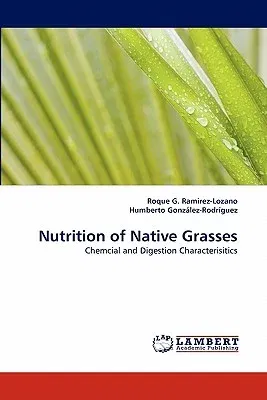Roque G Ramirez-Lozano
(Author)Nutrition of Native GrassesPaperback, 28 October 2010

Qty
1
Turbo
Ships in 2 - 3 days
In Stock
Free Delivery
Cash on Delivery
15 Days
Free Returns
Secure Checkout
Print Length
88 pages
Language
English
Publisher
LAP Lambert Academic Publishing
Date Published
28 Oct 2010
ISBN-10
3843369003
ISBN-13
9783843369008
Description
Product Details
Book Format:
Paperback
Country of Origin:
US
Date Published:
28 October 2010
Dimensions:
22.86 x
15.24 x
0.53 cm
ISBN-10:
3843369003
ISBN-13:
9783843369008
Language:
English
Location:
Saarbrucken
Pages:
88
Publisher:
Weight:
140.61 gm

